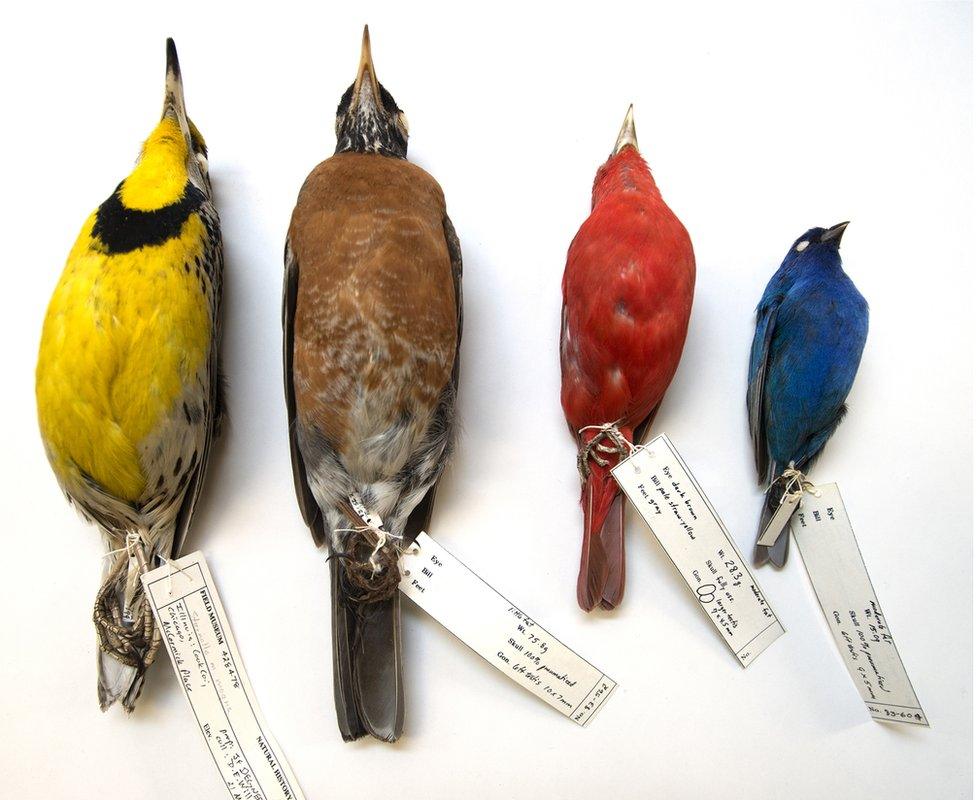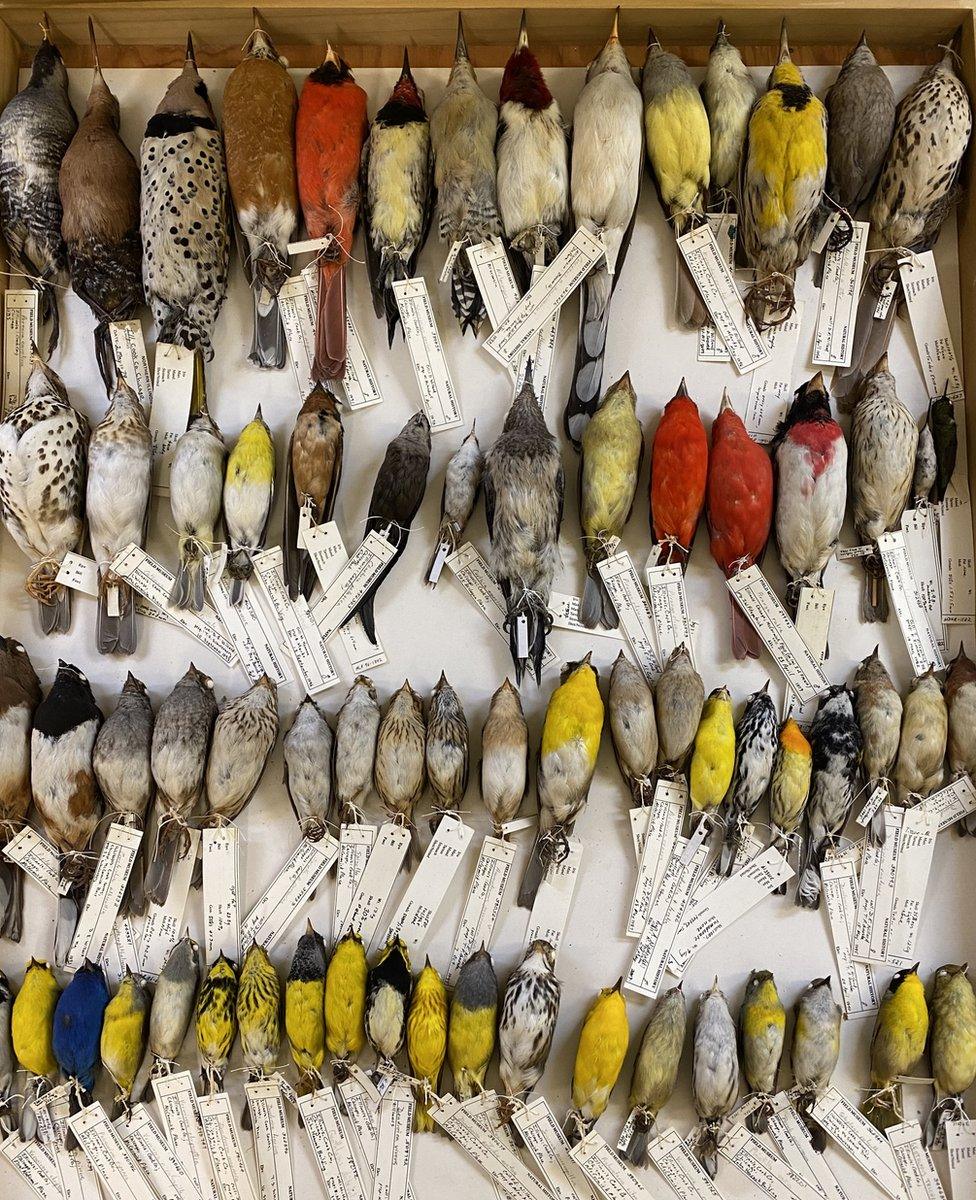Climate change is causing birds to shrink, study suggests
- Published

The researchers analysed 52 different species of migratory birds
As the climate warms, birds are shrinking and their wingspans are growing, according to a new study.
Researchers analysed 70,716 specimens from 52 North American migratory bird species collected over 40 years.
The birds had died after colliding with buildings in Chicago, Illinois.
The authors say the study is the largest of its kind and that the findings are important to understanding how animals will adapt to climate change.
"We found almost all of the species were getting smaller," said lead author Brian Weeks, an assistant professor at the school for environment and sustainability at the University of Michigan.
"The species were pretty diverse, but responding in a similar way," he said. "The consistency was shocking."
He said studies of animal responses to climate change often focus on shifts in geographical range or timing of life events, like migration and birth. But this study suggests body morphology is a crucial third aspect.

All measurements were taken by one researcher, Dave Willard, over the 40-year period
"That's one major implication," he said. "It's hard to understand how species will adapt without taking all three of these things into consideration."
The findings showed that from 1978 to 2016, the length of the birds' lower leg bone - a common measure of body size - shortened by 2.4%. Over the same time, the wings lengthened by 1.3%.
The evidence suggests warming temperatures caused the decrease in body size, which in turn caused the increase in wing length.
"Migration is an incredibly taxing thing they do," Mr Weeks said, explaining that the smaller body size means less energy available for the birds to complete their long journeys.
He says the birds most likely to survive migration were the ones with longer wingspans that compensated for their smaller bodies.
The scientists aren't exactly sure why warmer temperatures cause birds to shrink. One theory is that smaller animals are better at cooling off, losing body heat more quickly due to their larger surface-area-to-volume ratios.
Mr Weeks said the body of specimens was the result of a "herculean effort" by Dave Willard, co-author of the study and an ornithologist at the Field Museum in Chicago.

Dave Willard stands with the Field Museum's vast collection of bird specimens in 1999
In 1978, he started walking around buildings in the mornings during spring and fall migration to collect birds that had collided with buildings.
Birds usually migrate at night and are attracted to the artificial light from buildings, causing fatal collisions with windows. Hundreds of millions of birds are estimated to be killed in building collisions each year.
"He didn't have this study in mind," Mr Weeks said. "He just thought it could be useful in the future."
Over the years, many volunteers and scientists contributed to the collection efforts.
Mr Willard measured all 70,716 specimens himself using the same methods, "the gold standard" for this type of data, according to Mr Weeks.
The paper was published in the journal Ecology Letters, external.
It builds on a growing body of evidence that suggests animals are shrinking as the climate warms.
In 2014, researchers found that alpine goats appeared to be shrinking due to warming temperatures. The same year, another study found salamanders had shrunk rapidly in response to climate change.